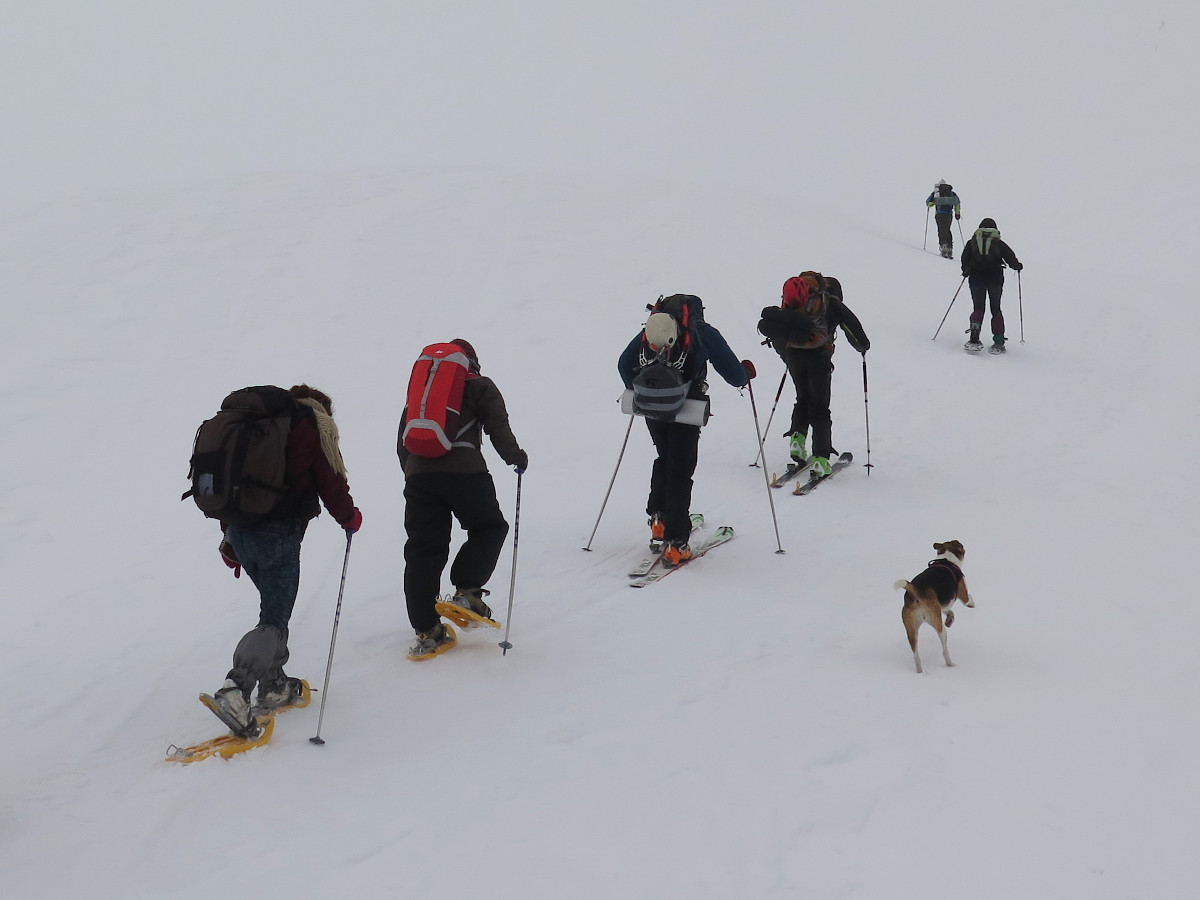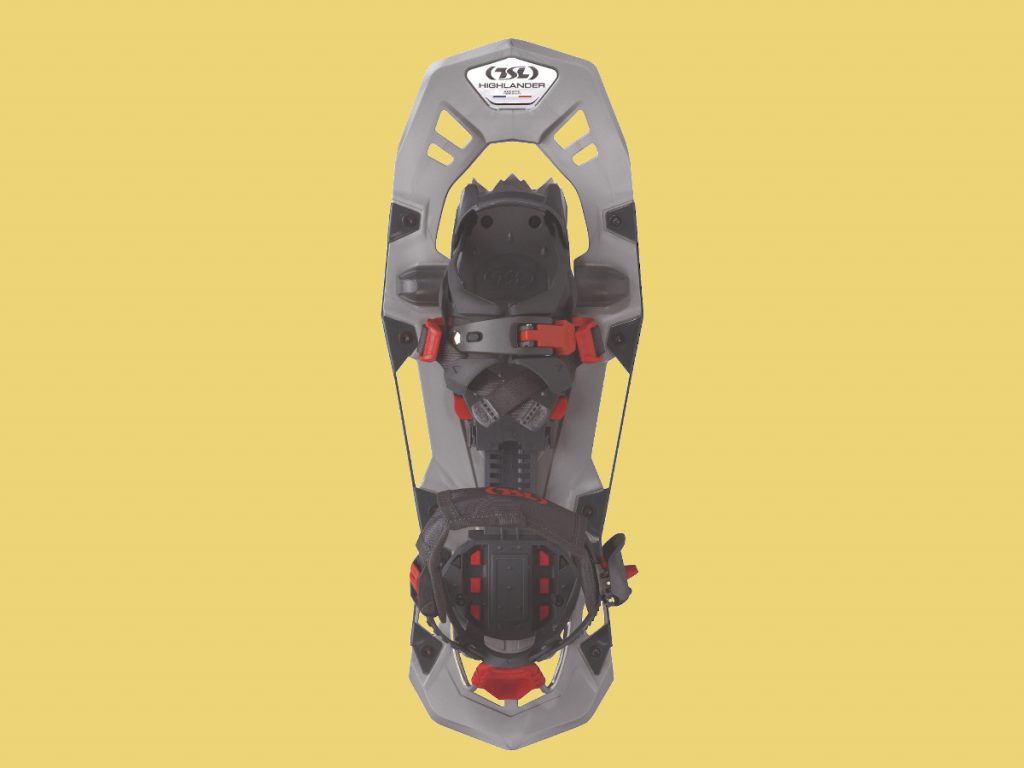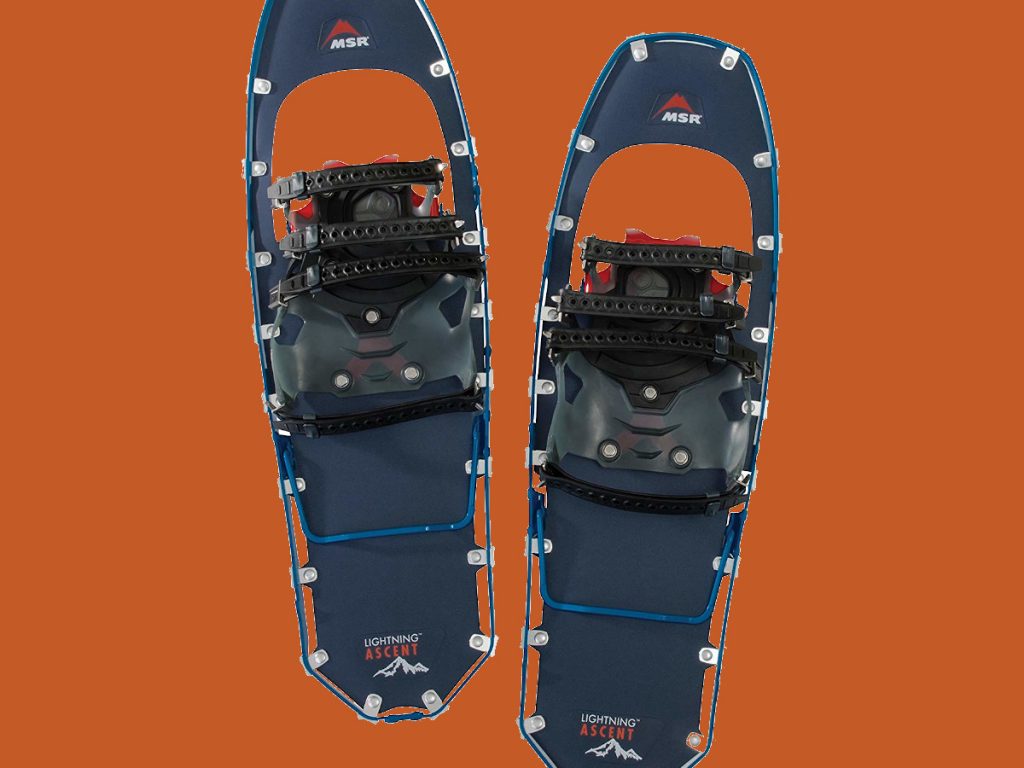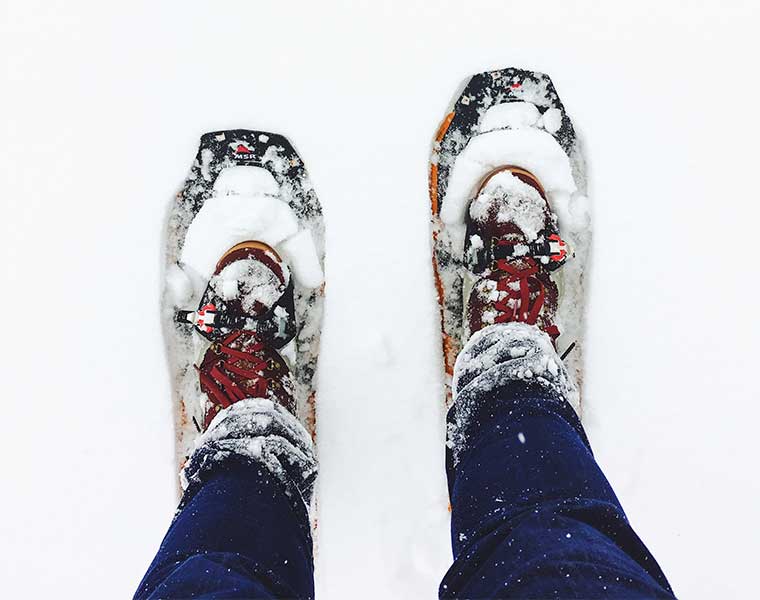Advice: Use of snowshoes. Progression & technique.

One of the mountain practices winter which has gained the most fans in recent years, is that of the snowshoeing. It is a sport that, apart from being healthy, offers the possibility of enjoying beautiful white landscapes.
Thanks to the snowshoes, progression in soft and deep snow is fast and comfortable.. In addition, one of the reasons why the sport has attracted so many people is that it does not require a difficult and time-consuming apprenticeship -this is not to say that you need the necessary experience to go beyond a short walk in the winter mountains.
However, before buying rackets directly, it is advisable to rent some to try and see if you like the activity or not.. Good rackets can cost a lot of money. between 150 and 300 euros at least. Nowadays, many ski resorts and mountain hostels offer the possibility of snowshoe rental.
Winter hiking or winter trekking is a relatively simple practice, but as we will see later, there are several techniques to perfect the way of walking with snowshoes. The assimilation of these techniques will make the activity more pleasant and less tiring.
Choosing snowshoes.
Before starting to talk about progression techniques, it is advisable to give some instructions about the choice of snowshoes. The snowshoe market offers a wide variety of snowshoes, and it is useful to know which ones to choose. most basic characteristics of rackets.
The first caveat is that the rackets and the crampons they do not have the same functions. People often confuse the uses of each material. Both will help us to travel more safely and efficiently in winter conditions, but they are designed for different types of terrain.
The simplest distinction is that snowshoes with their large surface area are designed for walking on soft snow with little slope and staying afloat, and crampons are more suitable on steeper slopes where the snow is harder. or is icy - sustained ice or on slopes above approximately 38 degrees. Therefore, if your idea is to climb mountains, crampons are more advisable. It is true that many snowshoes are designed to maximise traction and surface grip, but they cannot replace crampons in the conditions I have just described.
If it's snowshoeing you're after, get some snowshoes. Knowing this, you can start choosing the rackets that best suit your needs.
(YOU MAY BE INTERESTED IN: Best snowshoes. Buying guide and comparison)
Consideration should be given to the activity to be undertaken.. The rackets for a walk They do not sink deep into the snow, but can be dangerous on steep slopes or in hard snow, as they do not have metal teeth. However, they are the most economical. If the activity to be carried out requires a certain techniqueThere are also snowshoes designed for this purpose. Although they sink deeper into the snow than the previous ones, they have better traction. Lastly, there are also snowshoes on the market made of competition. They are only recommended if you are going to run.
Secondly, there are three types of snowshoes according to their bindings:
- UniversalsThis type of racket can be attached to any type of boot, by means of strings or straps. These are the most common, and generally the ones you will buy.
- Automaticautomatic rackets are quicker to attach, but require a special boot. The boots must have a rear clamp, to ensure that the boot is always fixed on the racket. It is a faster and safer system.
- Step in (specially designed boots): this is the newest binding system. Thanks to this system, the rackets are attached to the boots at the bottom, so the anchoring bands of the rackets can be eliminated. This makes the racquets and boots lighter in weight.

Analysing the snowshoe market 2021 models can be found from 120 to 300 euros. TSL is positioned as a top snowshoe brand. It has models such as the TSL HIGHLANDERwith a technical design that adapts to the terrain, with aggressive blades for greater safety.latching/clamping, combined with technical fasteners, for difficult locations For those who want to venture off-road or on steep slopes), which, if they have a downside, it's buoyancy. But that would be our choice if we are going to ride on technical terrain.
Without leaving TSL, the TSL SYMBIOZ HYPERFLEX ELITEEquipped with the Hyperflex concept, the Symbioz Elite allows perfect foot movement while adapting to the relief of the terrain. Its front toe, vertical slats and 8 stainless steel crampons, similar to those used in mountaineering, give it an exceptional grip.

The MSR Lightning Ascent (see model) are top of the range racquets, very light and grippy for steep terrain. Robust and with great grip, we can find them in the on the market for 300 euros.
Snowshoeing techniques.
Once you've chosen the right rackets for the activity you're going to do, it's time to get started. perfecting progression techniques. First of all, it is advisable to practice snowshoeing or winter hiking close to ski slopes, where the snow is not too thick. avalanche and avalanche risk is less. Once the snowshoes are attached to the boots, it is time to start walking.
- They are always canesWhatever the terrain, whether ascending or descending, it is necessary to use two poles. It is recommended use height adjustable poles. In addition, it is compulsory for the batons to have a rosette at the bottom so that the pole does not sink completely into the snow, you will get more buoyancy and the pole will not sink into the snow.
I remember an excursion to the Pombie hut, under the Midi D'ossau, where we spent the night. There we shared the refuge with a young group of French people who had all arrived without poles. The weather changed and the next day we all came down the mountain together for safety. Traversing the hard snow slopes was an odyssey without poles, so much so that one girl slipped and fell down the slope until she was lucky enough to stop in a hole in the wall, it was all a scare, but a warning. The poles are an essential piece of equipment, they provide balance when moving in soft or unstable snow, and increase the buoyancyThis will make it easier for us to move forward.
- Uphillall quality racquets have a raised backjust below where the heel is. When you find yourself when climbing a slope, it is advisable to use the liftThe heels are lifted off the ground so that you don't have to exert so much effort. On long hikes, energy saving is often appreciated. As long as the slope is not so steep that you lose your grip, it is advisable to walk uphill at a slower pace. front shape. In addition, they must loosen the heel fasteningsThe movements of the foot will be more natural. It is necessary to dig the toe of the foot into the snow and push the weight of the body forwardIn the event that the rackets lose traction, it is recommended that the following be done zig-zagging upwards.

- DownhillWhen it comes to descending the slopes, the procedure to be followed is just the opposite. The heels should be attached to the racket to increase control and stability.. Moreover, you have to dig your heels in, and put all your energy into it. body weight backwardsto prevent us from falling head-on. It is advisable to give shortcutsThis is even more so if the slope is steep or the snow is relatively hard.
What equipment do I need to bring on the snowshoeing trip?
Dress appropriately. The three-layer technique (dressing like an onion) will help you control your body temperature and prevent sweating. Sweating makes you dangerously cold, especially when you stop for a short break. To stay dry, you should shed layers as you warm up, to keep you slightly cool but not cold as you walk. When you stop for a break, put your warm layers back on and store all the body heat you have gained from the activity. By adjusting your layers to your activity level and the weather, you can stay comfortable and dry all day.
And carry the necessary equipmentThe equipment provided includes dry and warm clothing, food and water, navigation instruments, emergency equipment (communication device, thermal blanket, headlamp, arva), first aid kit and sun protection (sunscreen, sunglasses).
- Snowshoeing.
- Walking sticks.
- Clothes to dress in layers.
- Backpack.
- Food y water (if possible hot drinks).
- Communication device (mobile) more external battery.
- Navigation (map, compass, system GPS).
- First Aid Kit first aid.
- Lantern front.
- Sunscreen and sunglasses.
- Multi-tool/knife, fire starter.
- Avalanche rescue equipment (shovel, probe, etc.), arva).
- Emergency shelter/vivac.
- Extras (hand warmers, insulating seat, small cooker).
Tips for winter hiking.
- Snowshoeing is different from hiking. Although both sports share many of the same techniques and equipment, snowshoeing requires unique skills and experience to get into the winter mountains. In addition to the fact that you will often be walking off-trail or on unstable terrain, the weather conditions are more difficult, as is the potential risk of avalanches.
- Always carry a communication device (your mobile phone).. As much as you may want to switch off, before you leave your mobile phone at home, think about how you will communicate with the outside world if you get lost, injured or have any problems. Your mobile phone is a vital piece of your safety equipment. It is also important to leave a detailed travel plan with family or friends.
- Choose the best route. Avoid steeper slopes or avalanche-prone terrain (more on this later) and choose the path of least resistance to make your activity safer and more efficient.
- Check the weather in the mountains. Adverse weather conditions can significantly increase the difficulty and safety risks of a snowshoeing trip. Poor visibility, extreme cold and wet conditions are just some of the problems that can turn a fun hike into a dangerous one when unprepared. If you don't have the ability and experience to deal with these conditions, why not wait for another day and enjoy the hike?
- Watch out for avalanches (and be informed).. Check the avalanche risk level in the area. Daily forecasts are usually made and it is essential to have this information. With avalanche risk, you need to be clear, another day will be better. When walking on terrain with snow-covered slopes around you, there is a risk of avalanches, which will be greater or lesser depending on many factors, which will determine the mass of snow and its instability. We won't go into detail here, but here is a link to a guide where we expand on the subject (Avalanches: basic safety tips for winter mountaineering). We must educate ourselves to be able to correctly identify and avoid avalanche terrain. If you will be transiting in or near avalanche-prone terrain, you must carry avalanche rescue equipment and know how to use it. Each team member should carry an avalanche transceiver and a probe and shovel. This is discussed in the next section.
- Avalanche rescue equipment. In addition to the right choice of snowshoes, and the use of correct walking techniques, it never hurts to make use of other devices that can make your hike even safer. Three elements that will make the activity safer are the shovel, the probe and the harpoon.. It is the key to saving someone trapped under an avalanche. It is therefore essential to be trained in the use of these safety devices before embarking on the adventure of winter hiking in the high mountains.
Fastpacking is not about going faster. It's about going lighter.
If you come from classic trekking, this is the next step: learning to move with less weight,
more fluid and enjoying every kilometre more.
Join the channel and start discovering what lightness feels like.
